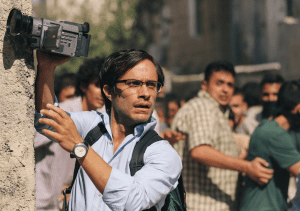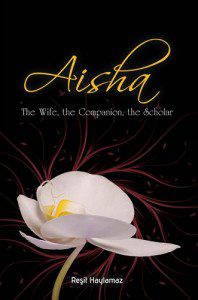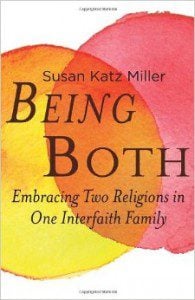 |
|
From Timbuktu to… here
|
As the International Museum of Muslim Cultures enters its sixth year of operation, this unique museum in the South has brought yet another world class exhibition to Jackson, Mississippi. Drawing from the success of the previous exhibit, Islamic Moorish Spain: Its Legacy to Europe and the West, the museum’s newest exhibit The Legacy of Timbuktu: Wonders of the Written Word reveals West Africa’s lost literate heritage. Opening in November 2006 to positive reviews from local and national media, this exhibit details the rich history of the great African Islamic empires.
Upon entering the museum doors, visitors are presented with displays that tell the story the ancient city of Timbuktu. Many visitors to the museum are surprised that Timbuktu is a real city located in the Republic of Mali, West Africa. In ancient tales of travel and lore, Timbuktu has represented a distant, mysterious place. But at the height of Timbuktu’s glory, it was a wealthy center of trade and commerce and a sacred city of three Islamic empires – Ghana, Mali, and Songhay. Timbuktu once controlled and produced two-thirds of the world’s gold, and also dominated the global trade of salt.
While salt and gold were popular trade items back then, it was books that proved to be the most profitable. High-quality books were produced throughout present day Mali, written by the scholars and students of Timbuktu’s universities and bound by artisans working in a sophisticated publishing industry. In ancient times, the universities and madrassas of Timbuktu had as many students as any modern day university. Students could earn a degree and study religion as well as science, Arabic, mathematics and philosophy. Timbuktu is also home to three famous mosques associated with these universities: The Djinguereber, the Sidi Yahya, and the Sankore mosques.
The IMMC exhibit details how Islam traveled from the Arabia peninsula to North Africa, and from there continuing its spread into West Africa. Special attention is given to Bilal Ibn Rabah (radiallahu anhu), the first African convert to Islam. Visitors will also learn about the First Migration of Muslims to the Christian kingdom of Abyssinia (present day Ethiopia).
The highlight of the exhibit consists of ancient manuscripts that were recovered in Mali that are crucial to understanding African and Islamic history. These manuscripts, many of which are hundreds of years old, attest to the legacy of African Islamic scholarship. Most manuscripts are written in Arabic, but some are written in the local languages of Fulfulde, Soninke and Tamasheq. During the French colonial period of Mali’s history, many Malians hid the manuscripts due to the fear of them being stolen by colonialists and sold to art and archeology collectors in France. Today, many of these same manuscripts are being preserved and archived in various private libraries throughout Mali.
The exhibit also details the decline of Timbuktu, as well as the resistance movements against colonial rule and the transatlantic slave trade. The famous mujahid El Hajj Umar Tal and Timbuktu scholar Ahmad Baba are featured. Visitors will learn that at least a third of the African slaves that were brought over to the Americas were Muslim, many of whom were scholars, students and nobleman. For example, Ibrahima Abdur-Rahman was a prince from Futa Djallon (Guinea) who was captured and sold into slavery in Mississippi. Omar ibn Said was an Islamic scholar from Futa Turo (Senegambia region) who was sold to slave owners in North Carolina. Mohammad Ali Ben Said, a Bornou native (Nigeria) was owned by many masters, but he learned nine languages and lived in five countries before arriving to the United States as a free man. He later served in the Union army during the Civil War and established schools for African-Americans in the South.
The Legacy of Timbuktu exhibit is making its way into academic circles, where a new trend of re-evaluation of African societies and civilization is taking place. Old age stereotypes have tended to depicted Africa and its people as primitive, illiterate, violent and lacking of any significant cultural, intellectual and artistic achievements. “When I was in school, we were taught that Africans didn’t have a written culture,” explains Okolo Rashid, the museum’s executive director, as she recalls her days growing up as an African-American in Mississippi. “So imagine how important this exhibit is for us as African-Americans who may not be aware of this part of our ancestors’ history.”
Prior to the rediscovery of these hidden manuscripts, many scholars and professors taught their students that Africans had never developed a literate culture. Under the auspices of Dr. Henry Louis Gates, Jr., head of the African-American studies department at Harvard University, the Timbuktu Library Project was created to copy, restore and translate 50,000 of the recovered manuscripts. Dr. Gates recalls his school days, when his schoolbooks told him that Africans could not read or write. Most of African civilization was believed to be a solely oral tradition. Years ago, while filming a PBS documentary on Africa, Dr. Gates was given the opportunity to view the manuscripts. The experience was overwhelming. “It was one of the greatest moments of my life,” said Dr. Gates. “I knew that the mind of the black world was locked in those trunks and when I held those books in my hands, tears rolled down my face.”
One person who was responsible for unearthing and protecting these texts is Cheikh Abdel Kader Haidara, curator and heir to the Mamma Haidara Memorial Library in Timbuktu, Mali. Under his direction, this library is responsible for preserving, translating, and archiving Mali’s lost literary treasures. The valued texts cover many standard topics of the day – science, mathematics, political science, and religion – but many also discuss such issues as women’s rights, religious tolerance, the rights of minorities, and peaceful conflict resolution. Even today in the madrassas of Timbuktu, the book production techniques used to produce many of these ancient texts are still used today.
The Legacy of Timbuktu: Wonders of the Written Word breaks multiple stereotypes and introduces the visitors to an Islamic African society known for its tolerance, justice and emphasis on God-consciousness and education. Once again, the International Museum of Muslim Cultures has introduced a fascinating subject to the American public. The exhibition will be displayed until December 2007, and will subsequently travel throughout the United States to various museums.
Kelly Izdihar Crosby is a contemporary Islamic artist and the author of the popular weblog Izzy Mo.











